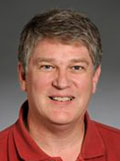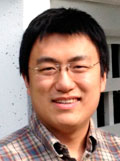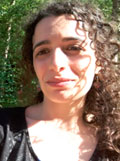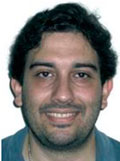Program
| August 13 | |
| 08h00 - 08h30 | Registration |
| 08h30 - 09h00 | Opening ceremony(
|
| 09h00 – 10h15 | Yin-Zhe Ma (
 PDF,
PDF,
|
| 10h15 – 11h15 | Coffee-break + posters |
| 11h15 – 12h30 | Marta Silva (
 PDF,
PDF,
|
| 12h30 – 14h00 | Lunch |
| 14h00 – 15h15 | Jeff Petterson ( PDF,
PDF,
|
| 15h15 - 16h00 | Coffee-break + posters |
| 16h00 - 17h15 | Filipe Abdalla (Hands-on) (
 PDF,
PDF,
|
| August 14 | |
| 09h00 – 10h15 | Jeff Petterson (
|
| 10h15 – 11h15 | Coffee-break + posters |
| 11h15 – 12h30 | Marta Silva(
 PDF,
PDF,
|
| 12h30 – 14h00 | Lunch |
| 14h00 – 15h15 | Filipe Abdalla (Hands-on) (
 PDF,
PDF,
|
| 15h15 - 16h00 | Coffee-break + posters |
| 16h00 - 17h15 | Yin-Zhe Ma (
 PDF,
PDF,
|
| August 15 | |
| 09h00 – 10h15 | Marta Silva (
 PDF,
PDF,
|
| 10h15 – 11h15 | Coffee-break + posters |
| 11h15 – 12h30 | Jeff Petterson (
|
| 12h30 – 14h00 | Lunch |
| 14h00 - 14h40 | Invited talk- Xuelei Chen (
 PDF,
PDF,
|
| 14h40 - 15h20 | Invited talk - Carlos Alexandre Wuensche (
 PDF,
PDF,
|
| 15h20 - 16h00 | Invited talk |
| 16h00 - 17h00 | Coffee-break + posters + discussions |
| August 16 | |
| 09h00 – 10h15 | Filipe Abdalla (Hands-on) (
|
| 10h15 – 11h15 | Coffee-break + posters |
| 11h15 – 12h30 | Yin-Zhe Ma (
|
| 12h30 – 14h00 | Lunch |
| 14h00 - 16h00 | Discussion / closing remarks (
|
| 16h00 - 17h00 | Final coffee-break |
Xuelei Chen
-

Xuelei Chen
Xuelei Chen is a professor at the University of Chinese Academy of Sciences and a visiting professor at Northeast University of China. He is one of the leaders of the Chinese TianLai telescope and an expert in 21cm measurements for cosmology purposes. His talk will present an overview of activities in 21 cm cosmology in China, particularly describing the TianLai and the FAST radio telescope, currently the largest radio telescope in the world.
Jeff Peterson
-

Jeff Peterson
I will describe the thermal history of hydrogen gas from recombination to reionization., probed by its 21-cm emission line. I will explain how 21-cm all-sky and imaging experiments use this line to study cosmic history of the first stars, galaxies, X-ray sources and large scale structure.
Yin-Zhe Ma
-

Yin-Zhe Ma
This leture will cover 21-cm cosmology aspects. 21-cm mean temperature and introduction to perturbation theory;, then we will proceed to the relativistic perturbation to 21-cm brightness temperature. Finally, we will cover how to measure BAO from CMB and 21-cm from observations.
Marta Silva
-

Marta Silva
The first stars formed during the Cosmic Dawn heated the intergalactic medium (IGM) above the cosmic microwave background (CMB). Later, during the Epoch of Reionization (EoR), the radiation from the first galaxies ionized the intergalactic medium. The reionization process was the last major phase transition in our Universe and had a large impact on the subsequent galaxy formation and evolution. The 21cm line from neutral hydrogen is a direct probe of the state of the IGM in the early Universe. Therefore, this transition line is the target of multiple Cosmic Dawn missions which plan to detect this signal in absorption and of EoR missions which are competing for a first statistics detection of the signal in emission. The second generation of 21cm line missions/experiments is being planned with the aim to model the evolution of the signal amplitude and spectral fluctuations and finally to map the 3D reionization field. I will describe the physics driving the 21cm line signal and the multiple efforts for modeling the 21cm line amplitude and spatial fluctuations during the Cosmic Dawn and the EoR. Furthermore, I will discuss the several current missions targetting the high redshift Universe and aiming to probe the reionization process and the sources of ionizing radiation.
Filipe Abdalla
-

Filipe Abdalla
Bayesian statistics is a very important tool to the cosmologist and the radio astronomer. The examples of uses of Bayesian statistics are fast in this field. For example: the determination of the maps which reveal the large scale structure of the Universe, the determination of Cosmological parameters or the detection of sources in radio images all can be optimal performed when a model is tested via the Bayesian framework. All of these ingredients are needed when testing a cosmological model. I will review the background of Bayesian statistics and its applications to cosmology. I will also review the methodology which allows us to solve some these problems in a Bayesian framework. We will review publicly available software which can be used in the above problems.





